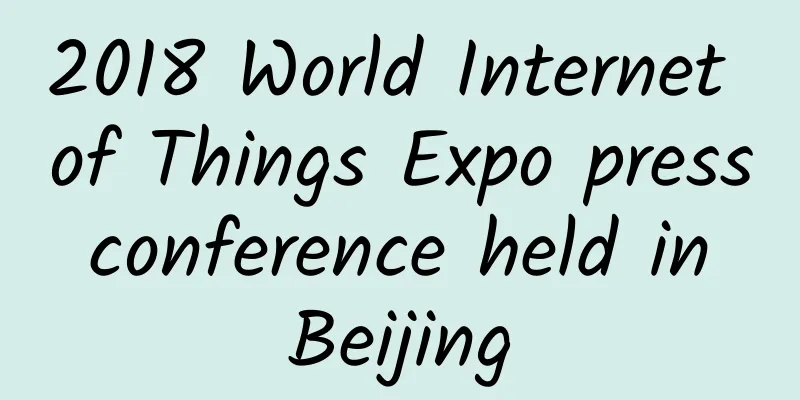How to tell if Wi-Fi 6 is right for you

|
There is a lot of discussion around the next generation Wi-Fi standard 802.11ax, commonly referred to as Wi-Fi 6. Usually, many new technologies are seen as big events by manufacturers when they first come out, and then declared failures because they are not practical and cannot meet expectations. However, for Wi-Fi 6, people's enthusiasm is justified because it is the first Wi-Fi standard designed with the premise that "Wi-Fi is the primary connection for devices rather than a convenient network." Wi-Fi 6 is loaded with features like Orthogonal Frequency Division Multiple Access (OFDMA), 1024-QAM (Quadrature Amplitude Modulation) coding, and Target Wake Time (TWT) that make Wi-Fi faster and less congested. Many of these enhancements come from the LTE and 4G space, where these challenges have long been addressed. These new features will result in a better mobile experience and longer client battery life, and they will open the door to a variety of applications that couldn't be done on Wi-Fi in the past. For example, architects can now use virtual reality (VR) to show homes over Wi-Fi. Wi-Fi 6 was ratified in 2019 and is now available in many commercial products. All businesses should eventually deploy Wi-Fi 6, but many do not need to do so immediately. 4 Types of Companies That Should Deploy Wi-Fi 6 (1) Customers currently running Wi-Fi 4 (802.11n) and earlier versions: Statistics show that it is estimated that up to 49% of enterprises are still running Wi-Fi 4 in their organizations. This technology is nearly a decade old and may cause major issues with application performance or reliability. These customers should skip Wi-Fi 5 (802.11ac) and deploy Wi-Fi 6. Deploying Wi-Fi 5 may result in the need to perform another upgrade in two to three years, while Wi-Fi 6 can stay in place for at least five years. (2) Pioneering companies that are first to adopt new technologies: Many businesses strive to stay ahead of the curve in technology. Wi-Fi 6 will provide the best experience for their customers and internal employees, and technology should be a top consideration for such businesses. These companies are often found in highly competitive industries, such as luxury retail and entertainment venues, and a poorly performing wireless network will quickly drive their customers to another brand. (3) Companies using high-bandwidth and immersive applications: Many businesses have integrated high-bandwidth applications into their business processes. For example, VR as a customer service or collaboration tool, and high-definition video in corporate workspaces and meeting rooms. The increased bandwidth of Wi-Fi 6 will ensure a better user experience. (4) Organizations that are setting up high-density wireless networks. This includes public venues, universities, stadiums, and theaters. These types of companies are often trying to capture usage data about their audience, so they need people to log into the Wi-Fi. With older versions of Wi-Fi, the network would quickly become saturated, causing individuals to switch to LTE. Use cases like this are difficult to achieve with older versions, but are possible with Wi-Fi 6. 3 steps to prepare for Wi-Fi 6 (1) Ensure the wired network is refreshed. Wi-Fi 6 will have a cascading effect on the campus core. The increased bandwidth may saturate the wired edge, where upgrades may have some impact on the core. Key features required for the wired network include: 30-watt Power over Ethernet (PoE+), multi-gigabit interfaces (1/2.5/5 GigE), and 40-gigabit core uplinks. In addition, unified management becomes a must-have. This allows security and access policies to be managed from a single dashboard and propagated across both wired and wireless networks. It is important to remember that the wireless experience is only as good as the wired backbone. (2) Implement AI-based operations management. Wi-Fi 6 enables enterprises to achieve hyper-connectivity, where virtually everything is tied into a common network. This will enable enterprises to create new processes that will drive productivity to new heights. The downside of over-connectivity is increasing complexity. One survey found that 61% of companies have little confidence that they understand all the devices on their network. This problem will only get worse as more things are connected. People can’t work fast enough to see everything and find insights in the data, but machines can. An AI-based operations tool is an important condition for the successful deployment of Wi-Fi 6. (3) Connect corporate networks to IoT-specific networks. Many vertical industries have closed networks for specific business functions. Examples include electronic shelf label networks in retail and radiology networks in hospitals. Digital transformation and the Internet of Things (IoT) will eventually converge these networks. Network professionals should prepare for this by understanding the size of these networks, the protocols used (such as BLE and Zigbee), and the security implications. One final note: Many IT professionals worry that they may be using Wi-Fi 6 too early because there are not many mobile terminals equipped with Wi-Fi 6 chips. We believe that it is better to get the network right before Wi-Fi 6 clients become popular, rather than reacting to problems after they occur. At the same time, terminals that support Wi-Fi 5 and earlier WiFi protocols can also work normally in WiFi 6 networks. |
>>: Is your business Wi-Fi fast enough?
Recommend
5G plans of the three major operators in 2020
So far, the three major operators have released t...
WiFi 6 is not suitable for individual users yet
5G has become a household name, but its new WiFi ...
2018 Top Ten Internet Trends Prediction: 5G Becomes the Focus
Whether it is the turbulent forty years in Wu Xia...
After reading the long connection in HTTP protocol, most programmers collected it...
What is a long connection? Long connection or sho...
Breakthrough in electricity usage could lead to big savings for data centers
Serial links are responsible for transferring dat...
To be successful in 2018, operators need to rely on these three strategies
The story of 2017 has come to an end. On the surf...
Network security attack and defense: wireless network security WEP
[[392852]] The WEP (Wired Equivalent Privacy) pro...
What is 6G and how close are we to its launch?
No, you read that correctly - 6G. Considering tha...
Sub-band full-duplex, a compromise for the 5G dream?
Hello everyone, I am Mayfly. In this issue, let’...
HostDare: 35% off VPS on CN2 GT line in Los Angeles, 10% off VPS on CN2 GIA line
HostDare has sorted out its VPS product inventory...
Where does the strength of 5G factories that “take over” 5G+Industrial Internet come from?
In order to accelerate the industry's quality...
Japan's strategy to compete for world 6G technology
In March of this year, when the COVID-19 epidemic...
Building a native cloud to truly realize the benefits of NFV
The goal of network function virtualization in th...
edgeNAT Los Angeles 4837 dual ISP host simple test
In February, the tribe shared the news that edgeN...
The concept and installation plan of network bridge and wireless bridge
What is a bridge A bridge is like a smart repeate...



![[11.11] Justhost offers a 30% discount for a limited time, with 22 data centers available in Russia, the United States, Singapore, etc.](/upload/images/67cabd1277b6f.webp)





